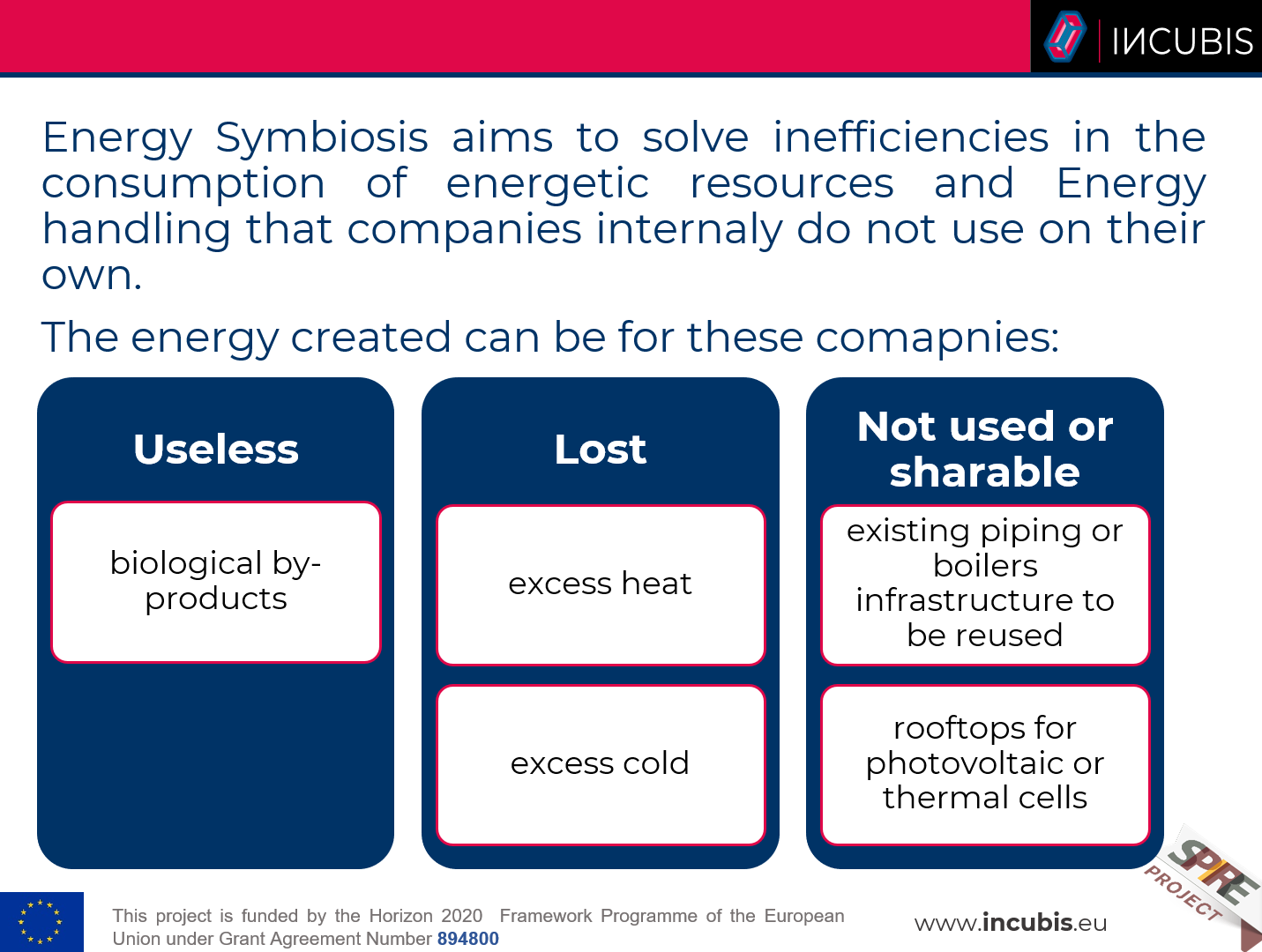Energy Symbiosis is a recognized and effective practice to reduce fossil fuels dependency and decrease the environmental footprint of the industries involved. Energy-based Industrial Symbiosis can be classified into two separate categories:
- Waste heat/cold exchange. Excess heat from a process is used by another process, in the same industry or neighbouring one. Also, excess heat can be reused as space heating in urban areas.
- Bioenergy production. This synergy occurs when organic wastes are used to produce bioenergy or biofuels (biogas, biomass combustion…).
The INCUBIS project has focused on the waste heat exchange Energy Symbiosis category, although in some of the case studies a mix of Energy Symbiosis categories have also occurred in order to ensure the thermal energy supply.

The key basic aspects in an Energy Symbiosis system are:
- A systemic vision of the industrial site, mimicking the functionality of a natural ecosystem.
- A dynamic and trust-based network of entities and companies linked to the Energy Symbiosis opportunity, including different industrial actors, belonging to different sectors of activity, or governmental and other institutions, including universities and trade associations for example.
- Sustainable development is the core concept of energy symbiosis, considering all the branches of sustainability: environmental, social and economic.
Finally, similarly to Industrial Symbiosis networks, Energy Symbiosis projects can be diverse in terms of their nature, emergence, development patterns and content of the transactions. Depending on the way in which these relationships are established and coordinated, networks can be divided according to:
- Self-organized network: emerging as the result of direct interaction among industrial actors.
- Managed network: those that have a third-party intermediary (a facilitator) who coordinates the activity. We can find two types of managed networks:
- Planned networks, where the networks are formed following a central plan or vision that includes attracting new businesses to purpose-built developments, generally offering shared infrastructures and services.
- Facilitated networks, working with existing companies to raise awareness of ES and foster activity.

No Comments
Comments are closed.